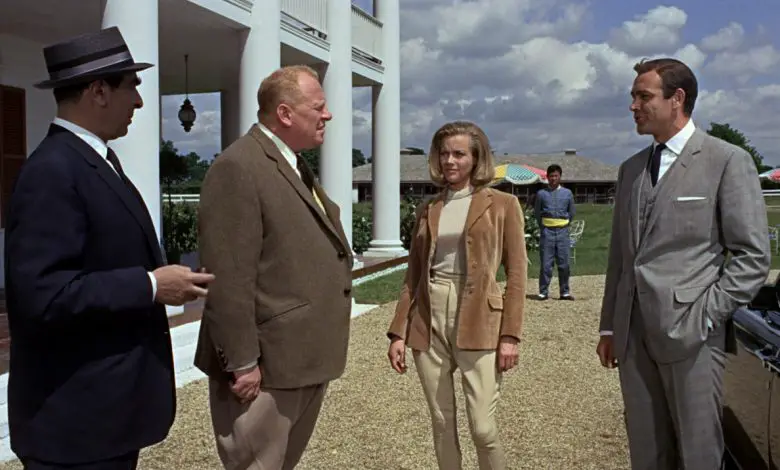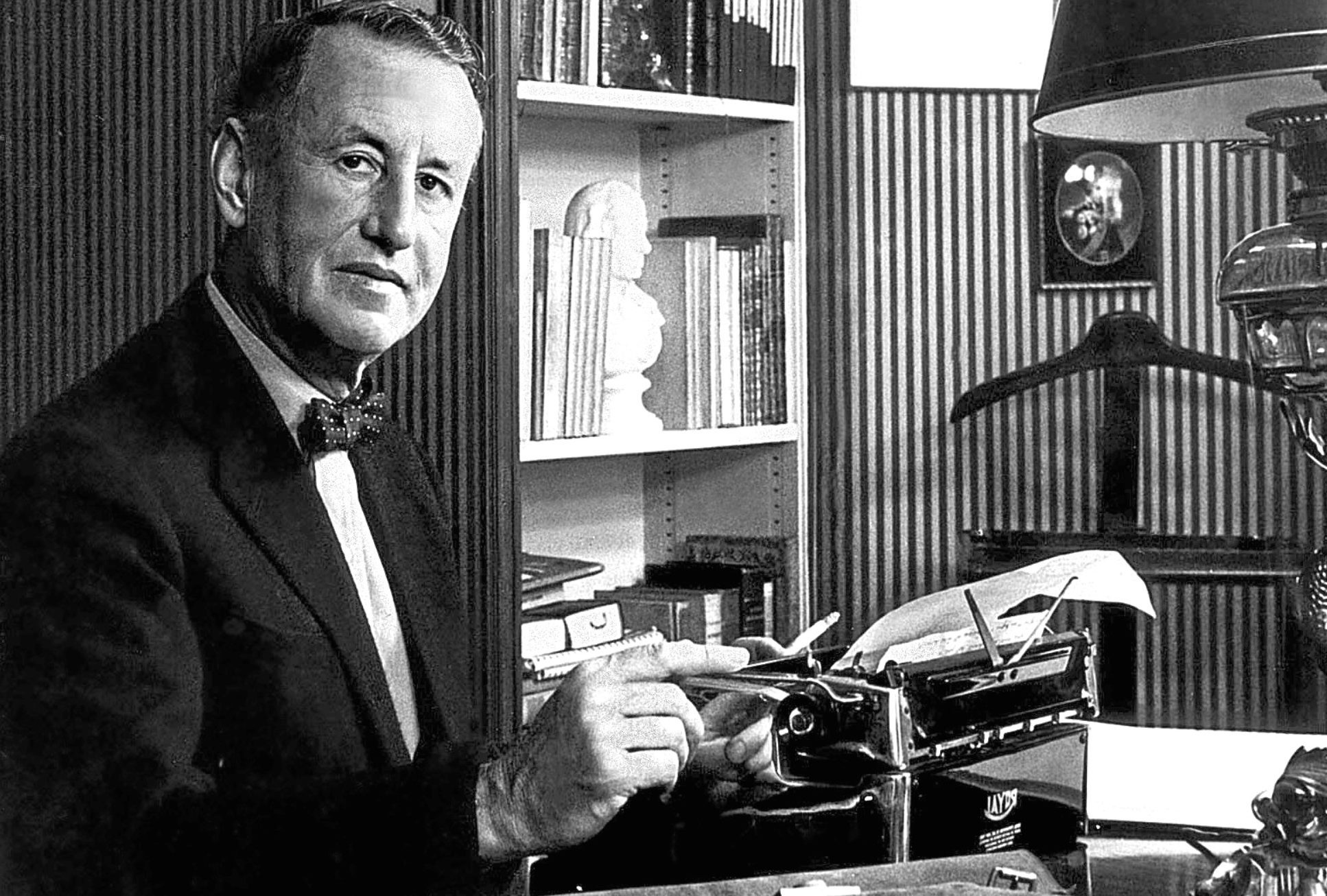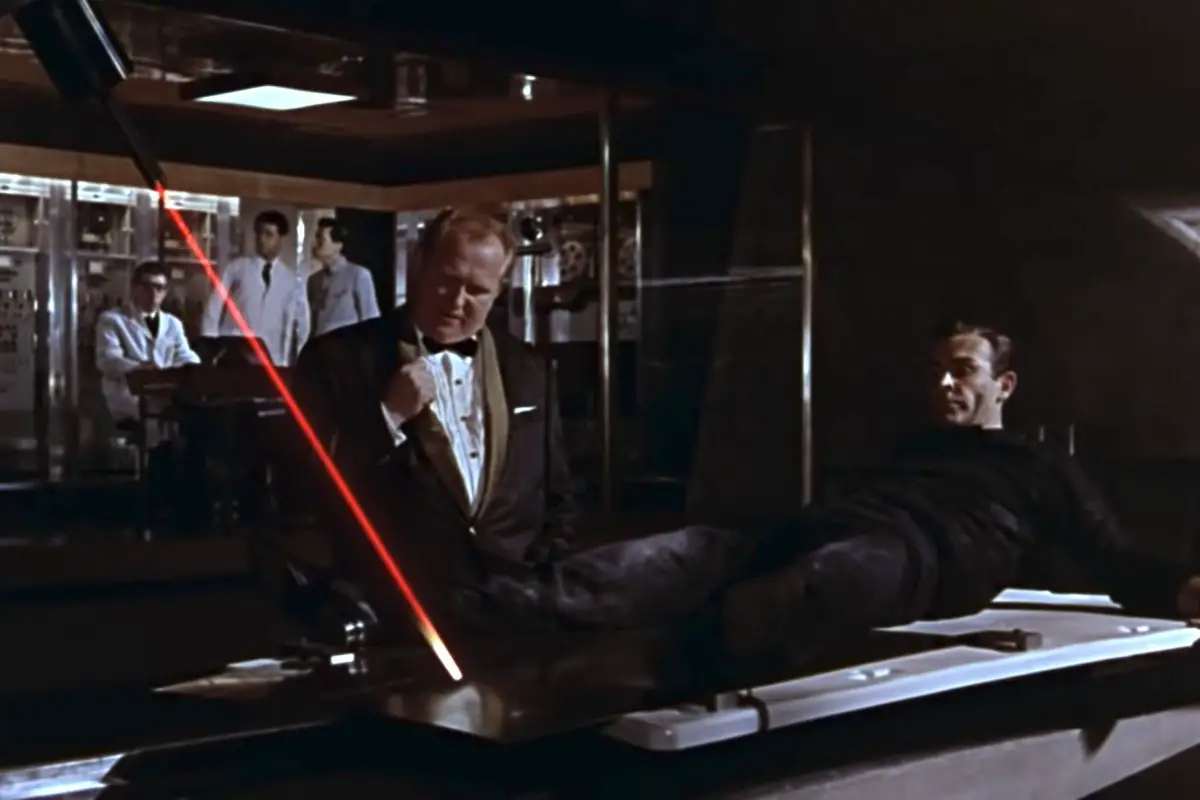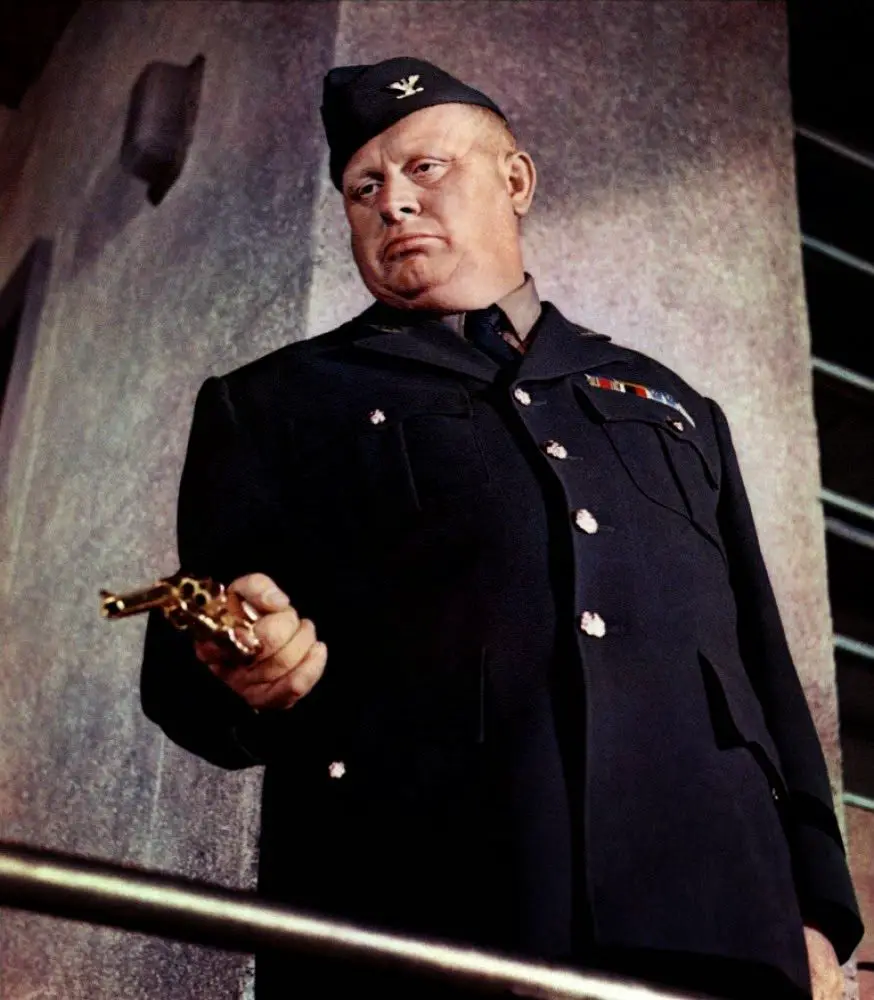
The iconic James Bond movie, “Goldfinger,” starring Sean Connery, has captivated audiences for generations with its thrilling plot centered around the audacious plan to raid Fort Knox. This film, which premiered in 1964, not only brought to life Ian Fleming’s imaginative world but also raised questions about the origins of the daring plot. While Fleming’s creation has become a cinematic legend, it is worth delving into the intriguing theory proposed by historian Dr. Andrew Cook in 2009. Cook suggested that Fleming’s inspiration for the Fort Knox heist might have been drawn from a real-life plot to blow up the Bank of England in 1914. This article explores the evidence behind this theory and the fascinating connections between history and fiction.

The Goldfinger Plot: A Masterful Adaptation
In “Goldfinger,” the brilliant set designer Sir Ken Adam created the now-iconic Fort Knox interiors, setting the stage for a thrilling heist. The film’s key sequence, deeply rooted in Ian Fleming’s original novel, required some adaptation to suit the cinematic medium. Screenwriter Richard Maibaum introduced a pivotal change, having the villain, Auric Goldfinger, plant a ‘dirty’ atomic device in Fort Knox instead of stealing the gold. This alteration aimed to make the plot more plausible, as stealing such a vast amount of gold from a highly secure vault posed significant logistical challenges.

The Real-Life Inspiration: Operation ‘Grand Slam’
Dr. Andrew Cook’s research shed light on a fascinating historical connection that might have influenced Fleming’s imagination. Cook’s evidence suggests that Ian Fleming’s plot for the Fort Knox heist could have been inspired by a real-life German intelligence plot in 1914 to blow up the Bank of England and disrupt the British economy.

The Secret Service Bureau’s Role
In 1914, the Secret Service Bureau, the precursor to MI5 and MI6, played a crucial role in thwarting the German plot. Under the leadership of Sir William Melville, a former Special Branch chief known as ‘M,’ the bureau uncovered the German plan. Melville’s resourcefulness and determination led to the discovery of secret communications, ultimately revealing the Germans’ intention to place high explosives in a London Underground tunnel beneath the Bank of England.
Averting a Potential Catastrophe
The urgency of the situation prompted extensive searches of the tunnel system to prevent the German plot from succeeding. While Cook’s assertion that the success of the German plot would have cost Britain the First World War may be an exaggeration, it is clear that such an event would have shaken British confidence during a critical time.
Ian Fleming’s Connection to History
Ian Fleming, the author of the James Bond series, served in the British Admiralty’s Naval Intelligence Department during World War II. His access to classified information and intelligence files during this time exposed him to various covert operations and espionage activities. It is highly plausible that Fleming’s knowledge of the Bank of England plot from his wartime duties sparked his curiosity and influenced his later writing.
Connecting the Dots: From Bank of England to Fort Knox
Dr. Cook’s theory suggests that Fleming may have transposed the real-life Bank of England plot to the American setting of Fort Knox for his seventh Bond novel, “Goldfinger.” This adaptation aligned more closely with the plot used in the film version of “Goldfinger,” where an atomic device threatened the gold reserves. Ironically, this movie adaptation echoed the 1914 plot more closely than Fleming’s original ‘steal the gold’ concept.

The Mystery of ‘M’
Sir William Melville was a towering figure in the world of espionage, known for his larger-than-life persona and his mastery of disguise. His remarkable career in the Secret Service Bureau (the precursor to MI5 and MI6) was filled with daring exploits and clever tactics. Here, we delve into some of the most intriguing chapters of Melville’s life, highlighting his exceptional skills and a pivotal moment that led to the thwarting of a German plot.
Master of Disguise and Espionage
Melville’s reputation as a master of disguises was well-earned. He possessed an uncanny ability to blend into various roles and personas, making him an invaluable asset in the world of espionage. But his talents extended beyond mere disguise.
In an extraordinary twist, Melville sought the guidance of the famous escape artist, Harry Houdini, to acquire the skills of picking locks. This unusual partnership not only enhanced Melville’s own capabilities but also allowed him to train members of his elite team, the Secret Service Bureau’s ‘Special Section.’
The Overstretched ‘Special Section’
The ‘Special Section’ was a select group within the Secret Service Bureau, tasked with monitoring and countering German espionage activities in England. Due to its small size and the magnitude of its responsibilities, the unit often found itself stretched to its limits.
Melville: A Hands-On Leader
Melville’s leadership style was hands-on and proactive. He was not content with desk duties and paperwork; instead, he relished fieldwork and actively participated in operations. His enthusiasm for hands-on involvement was evident, and he thrived in the thick of espionage activities.
The Lucky Break in 1911
In 1911, while apparently working undercover, Melville experienced a stroke of luck that would change the course of history. During a routine train journey, he overheard a conversation that piqued his interest. A man of German descent mentioned receiving a letter from Germany, inquiring about Britain’s coastal defenses. This seemingly innocuous conversation held a vital clue.
Cracking the Code: ‘F. Reimers’ and the Barber Shop
Melville’s instincts went into overdrive. The mention of ‘F. Reimers’ as the sender of the letter led him to suspect that this alias belonged to none other than spymaster Gustav Steinhauer, a key figure in the German espionage network in England.
Further investigation led Melville’s team to a nondescript barber shop on Caledonian Road in London. To their astonishment, they discovered that this seemingly ordinary establishment was being used as a clandestine ‘letter-box’ by Steinhauer to transmit secret communications to his network of German spies in England.
The Art of Mail Interception
With their breakthrough, Melville and his team placed the barber shop under intense surveillance. Every piece of mail passing through the shop was secretly intercepted, carefully opened, and meticulously examined by Melville’s agents. The contents of these intercepted letters held the key to unraveling the German espionage plot.

Conclusion: A Bond Connection to History
The connection between Ian Fleming’s fictional world and real-life espionage remains a captivating topic for Bond aficionados. Dr. Andrew Cook’s theory about the influence of the 1914 Bank of England plot on “Goldfinger” adds depth to the legacy of Fleming’s work. While the exact origins of ‘M’ and other elements of the Bond universe may remain a mystery, one thing is clear: the James Bond franchise continues to intrigue and inspire audiences, bridging the gap between history and fiction.









4 Comments